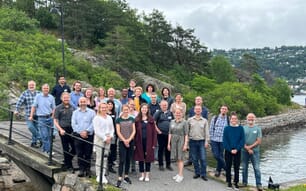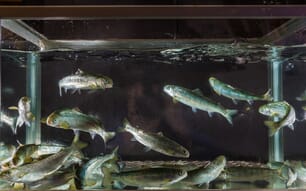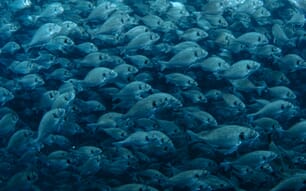Adapting food production systems – including aquaculture – in the face of the unprecedented challenges posed by climate change will require a much greater effort from all stakeholders, as the knowledge gaps are huge and the impact complex.
Aquaculture is one of the fastest growing food production sectors in the world, responsible for more than half of global seafood production. It is expected that this sector will be an even more important food resource in the future, due to over-exploited wild fish stocks, reduced land available for agriculture and a growing human population. However, anthropogenic climate change is altering coastal and marine environments throughout the world at an unprecedented rate. There is now clear evidence that human activities and greenhouse gas emissions have led to climate change and that continued emissions will result in further warming and long-term changes. These changes will amplify existing risks and create new challenges for the global food systems.
Future aquaculture production will undoubtedly be impacted by climate change, which will in turn affect the sector’s contributions to global food supply. Industry and policymakers can develop and implement climate adaptation measures to maximise opportunities and minimise risks, but decisions must be evidence-based and grounded in information on how future environmental changes will affect the sector. So far, knowledge of how farmed species are affected by the changing environment is limited, climate projections do not capture local farm conditions and targeted technological improvements to solve climate related challenges are inadequate to meet the environmental changes farmers are already experiencing at their sites.
Norwegian salmon: a case study
There is an urgent need to assess implications for aquaculture and identify potential adaptation strategies that can support sustainable production of fish and shellfish under a changing climate. In a recently finished H2020 project (ClimeFish), Atlantic salmon aquaculture in Norway was used as a case study to demonstrate the complexities of climate change risk assessment and the details required for adaptation.
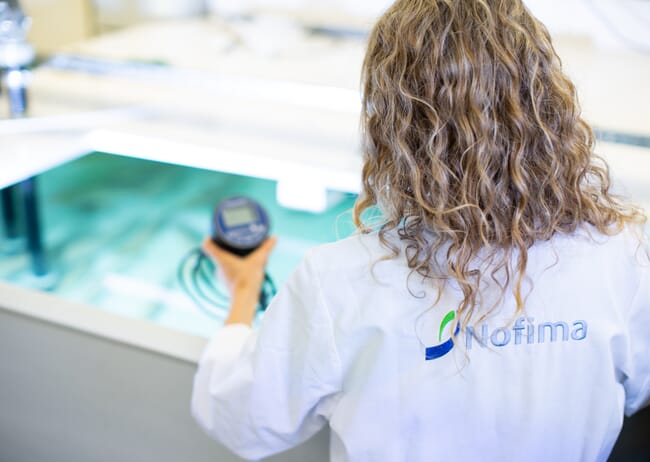
© Joe Urrutia, Nofima
Norway is the world’s leading salmon producer with annual production of 1.3 million tonnes. Farmed salmon is the country’s second most important export after oil and gas and there are ambitions to increase production to 5 million tonnes by 2050. Clearly, to maintain or increase production, there is a need to consider how climate change could affect salmon production and to identify potential adaptation strategies.
The salmon industry in Norway spans almost the entire coastline, ranging from Arctic conditions in the north to temperate conditions in the south. The different geographical regions are exposed to a diverse climate, and climate change will affect the regions differently. In addition, salmon production includes several different stages, all of which have different environmental interactions. This, and the fact that salmon aquaculture is technologically highly advanced, with the potential of investing in costly and long-term adaptation strategies, make Norwegian salmon aquaculture a good case study.
To evaluate the impact of climate change on salmon production, we need to know how the environment affects its biology. Salmon grow best when the water temperature is below 14°C, and higher temperatures may alter metabolism, increase the risk of developing diseases and induce stress. Water temperatures higher than 20°C may result in increased mortality levels.
Increasing temperatures create new challenges
Near future projections for the south of Norway suggest that we may expect years with summer temperatures above the thermal threshold for salmon. In the north of Norway, an average temperature increase may not expose the fish to conditions above the temperature tolerance, but warmer waters are likely to bring increasing challenges related to sea lice infestation and occurrence of diseases to these regions. In addition, the seasons for parasites may be prolonged through persistent periods of warmer temperatures. This further implies more treatment and handling of farmed fish, with a parallel reduction in growth and welfare.
Warmer temperatures may also affect the cleaner fish species which are commonly used in the salmon pens to control sea lice. Lumpsuckers are adapted to cold waters, and their activity is reduced with increasing temperatures. Another potential effect is harmful algal blooms, often observed in the aftermath of high water temperatures.
These are just some of the challenges an average increase in temperature may pose to aquaculture, but undoubtedly there will be other impacts. Consequences of anthropogenic climate change also include changes in salinity, pH and oxygen levels, more extreme events and sea level rise. These climate stressors may lead to compounding effects and complex challenges for the aquaculture sector.
Extreme events require special attention
Extreme events, like marine heatwaves – defined as periods of extreme warm sea surface temperatures – are a major threat to aquaculture. Marine heatwaves have become more frequent, extensive and intense in the past few decades. For aquaculture, they may cause sudden, devastating impacts, threatening the farmed species physical limitations, biological processes and cause mass mortalities if precautions and proper action are not taken.
Farmed fish are confined to their pens and are subject to the changing conditions. Anomalously warm waters can then potentially contribute to stressed fish and subsequent diseases, cause a drop in the oxygen level in the net pens, and – in the worst case – kill the fish. To be effective, a risk assessment should not lose the overall sight of this complexity. One climate stressor may affect another, having possible domino-effects on the fish health and the farming system. To prepare for such events, the biological threshold of the farmed species under relevant environmental stressors, long-term climate projections suitable for the farm locations and detailed risk and adaptation analyses must be prioritised as research areas.
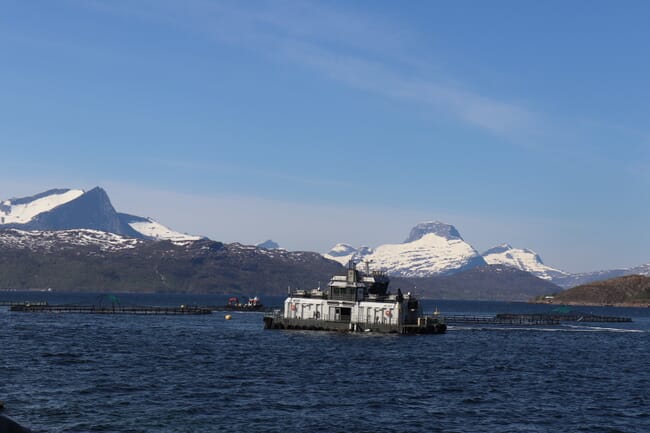
Risk assessment and adaptation
From the Norwegian salmon case study, a thorough assessment of risk factors related to different climate stressors and suggestions for adaptation measures, was made. This work showed that action is needed from all stakeholders involved, since some risks will have to be handled by aquaculture producers at a farm site, while others will require the whole industry to respond. Some levels of action will even require involvement from the policy makers. Moreover, the analyses showed how complex adaptation to climate change will be. There may be trade-offs, as one adaptation may directly or indirectly affect another, and some strategies may be effective in the short-term, but could have long-term consequences. Even measures that have negative effects greater than the risks the original action was intending to avoid, are possible and should be considered as maladaptation. The outcome of the work from the Norwegian case study will be published later this year.
Developing adaptation strategies
It is also important to consider barriers to adaptation, such as technological limitations, financial costs, knowledge gaps, timeframes and regulations. Our research looks into different strategies, like providing a deep water inlet to the pens – to provide the fish with cold, oxygen-rich water – and selective breeding programmes that cater for more temperature-tolerant species. Another strategy that may become more relevant in a rapidly changing environment, is the diversification of cultured aquatic species. This may be essential for the long-term robustness of the industry, by providing more opportunities related to available sites, strengthening the industry’s resilience to changes and adding flexibility to adaptive measures. However, as with other complex adaptation strategies, like selective breeding programmes and offshore technology, introduction of new species requires long term commitment and focus.
Ultimately, the choice of adaptation strategies will depend not only on the expected consequence of future change, but also production practices and available resources. Undoubtedly, adaptation of aquaculture to climate change is complex and requires attention to ensure that measures are appropriate, for the farmed animals, the industry, the environment and society.

